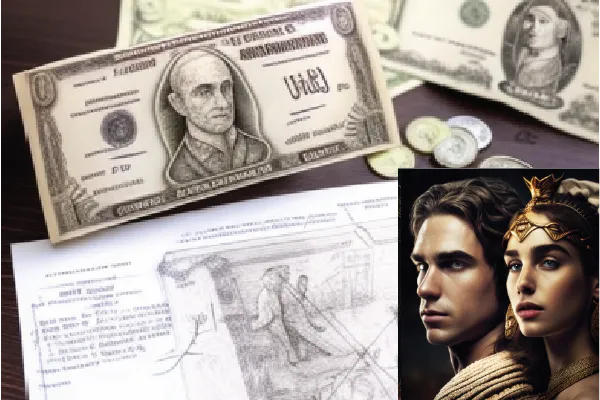
History Of Money With Alexander the Great and Cleopatra
History Of Money With Alexander the Great and Cleopatra
Let's take a look at the story of Alexander the Great and Cleopatra to illustrate how they invested their wealth to achieve their goals and how saving and investing can lead to financial security and independence.
Alexander the Great was a king of Macedon who ruled from 356 BC to 323 BC 🏰.
He is considered one of the greatest military leaders in history, and his conquests led to the spread of Greek culture across the ancient world.
Alexander used his wealth and resources to build a powerful army and expand his kingdom.
He invested in building a strong navy, which allowed him to control the seas and expand his empire even further. He also invested in building roads and infrastructure, which facilitated trade and communication within his empire.
Cleopatra was the last pharaoh of Egypt 🇪🇬 , who ruled from 51 BC to 30 BC.
She was known for her intelligence, beauty, and political acumen.
Cleopatra used her wealth and power to expand her kingdom and cement her position as one of the most powerful rulers in the ancient world.
She invested in building a powerful navy, which allowed her to control the seas and expand her empire.
She also invested in building infrastructure, such as ports and roads, to facilitate trade and communication within her kingdom.
Both Alexander the Great and Cleopatra understood the importance of investing their wealth to achieve their goals.
They invested in building a powerful military and expanding their empires, which allowed them to gain power and influence.
They also invested in building infrastructure, which facilitated trade and communication within their empires.
Money is something that has been around for thousands of years and has evolved over time.
In the past, people used things like shells, beads, or gold to trade with each other.
These things were called "barter" or "commodity" money.
They were valuable because they were rare and difficult to obtain.
As civilizations grew and became more complex, people needed a more efficient way to exchange goods and services.
This is when "fiat" money was introduced.
Fiat money is not backed by a physical commodity, but by the government that issues it.
This means that the value of the money is based on trust in the government.
Today, most of us use paper money and coins as our primary form of currency.
But as technology has advanced, new forms of money have been created.
Credit cards, digital money, and cryptocurrencies are just a few examples.
These new forms of money use computer networks and the internet to make transactions.
They also make it possible to do things like buy things online or send money to people in other countries quickly and easily.
So, as we can see, money is something that has changed over time and will continue to change in the future as technology improves.
It's fascinating to think about how money has evolved and what the future holds. Will we still be using paper money in 100 years? Only time will tell.
Finally, it's important to explain to kids why money is important.
Money allows us to buy the things we need and want, and it also allows us to save for the future. You can also explain to them that money is a tool, not a goal in itself, and that by having a healthy relationship with money, we can create a better future for ourselves and others.
Activities For Kids To Understand History Of Money:
You can play a role-playing game where kids have to make decisions as Alexander the Great or Cleopatra and see how their choices impact their wealth and power.
Create a scavenger hunt where kids have to find and identify different types of money used throughout history, or you can create a crossword puzzle where kids have to match words related to the history of money with their definitions.
Create a timeline of the history of money in their country or region, including the types of currency that have been used and when they were introduced.
Visit a local museum or bank to learn about the different types of money that have been used in the past and how they were made.
Research the history of banking and credit, including the role of banks in society and the development of credit cards.
Learn about the history of trade and commerce, including the role of money in facilitating trade.
Compare and contrast the use of money in different cultures and time periods.

